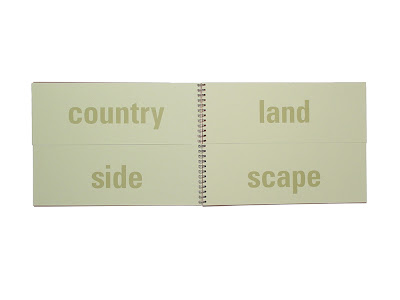





CONTROLLING NATURE: APRIL 2005
This bookwork studies how “control, “construction” and “natural inspiration” create a book form. Water as the essence of life, as an element that flows with no distinct start or stop, became the motivation behind creating a book which would be infinitely malleable. Getting its cues from nature, the book interprets the idea of control through the flowing ink which reveals and conceals the text underneath. The inner form is constantly changing and will never be the same twice. Time changes the piece. With his interaction, the reader changes the work and discovers the world hidden underneath.















































